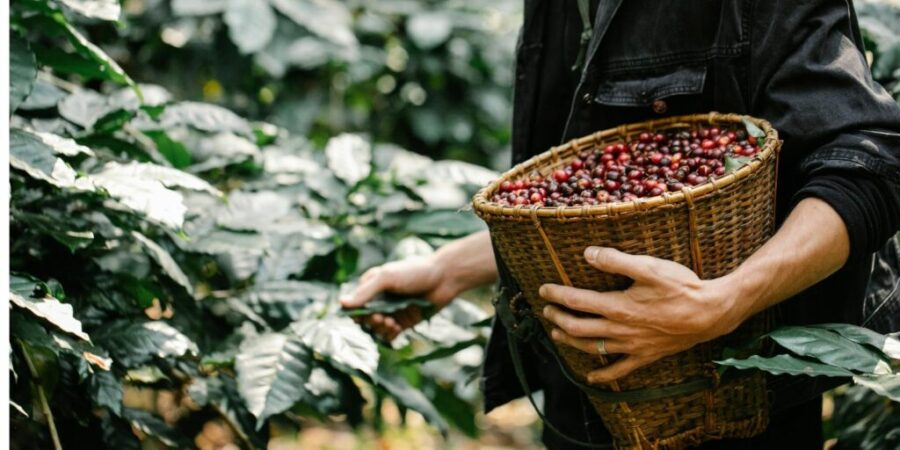Coffee rust or coffee leaf rust is a significant problem in coffee-producing regions. Caused by the fungus Hemileia vastatrix, outbreaks can have a devastating impact on crop yields, rendering coffee cultivation uneconomic wherever it reaches epidemic proportions.
Coffee leaf rust symptoms
Coffee rust symptoms are easy to spot. Trees infected with coffee rust develop yellow spots on the upper side of their leaves and an orange rust-like powder on the underside. This ‘rust’ causes early shedding of leaves, which greatly diminishes the plant’s capacity for photosynthesis. As a result, the new stems, which bear next season’s crop, struggle to grow.
Coffee varieties
Of the two main coffee species grown for consumption, arabica is the most delicate and therefore more vulnerable to coffee rust. Ghana grows best in warm, humid environments; conditions which favour Hemileia vastatrix.
Currently one of the most effective management practices against coffee rust is the use of resistant varieties of coffee. Robusta, the other preferred coffee variety, is a more disease-resistant bean and will grow in conditions that are less likely to see coffee rust outbreaks. It is also less expensive to maintain and produces a higher yield.
How is coffee leaf rust spread?
Coffee rust spreads easily, making it difficult to manage. Wind and rain easily transport the powdery fungus spores. Humans can also help spread coffee rust, particularly farmworkers, as the spores can stick to clothes when moving around the plants.
How to stop coffee leaf rust from spreading
One recommendation for stopping coffee leaf rust from spreading is to space out coffee plants. Hemileia vastatrix thrives in hot, wet conditions, so tree spacing of 3x3m is recommended as it can reduce humidity and hinder fungal spread. What’s more, removing weeds and pruning unnecessary vegetation improves air circulation and can also help stop the fungus.
It is also important to ensure the coffee plants are healthy and robust. Low-nutrient trees are more vulnerable to coffee rust, so spreading organic manure can be beneficial as it increases nutrients for plants.
How to monitor for coffee rust
It is important to regularly monitor trees so you can spot signs of rust fungus as soon as they appear. The first signs are yellow/orange powdery spots on the underside of leaves with corresponding yellow patches on the upper side. These are usually around 2-3 millimetres diameter in size, increasing to 4 centimetres. The centre of these spots eventually becomes necrotic and turns brown and may spread until the entire leaf is dead.

Leave a Reply